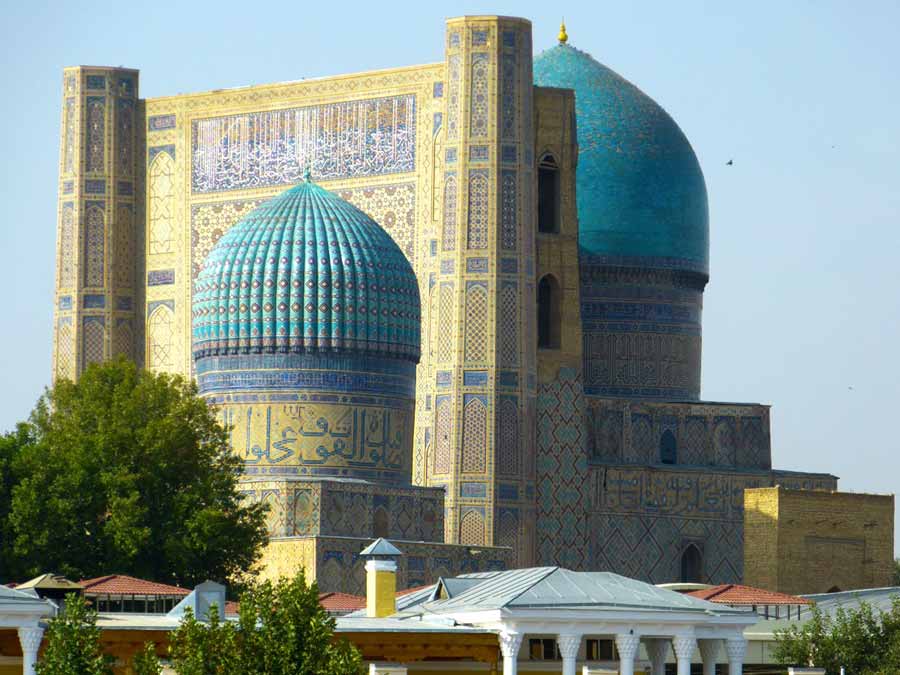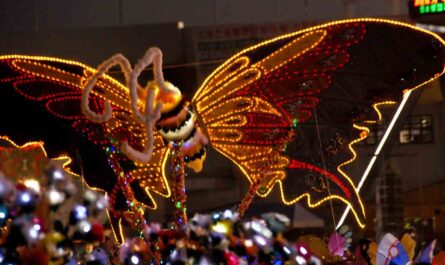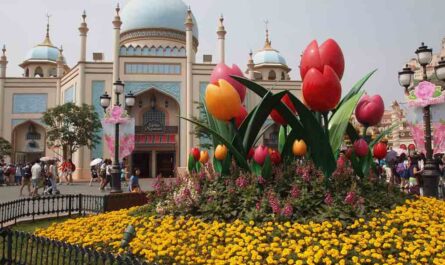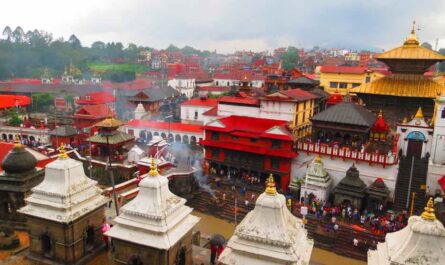Fun, cool, and interesting facts about Uzbekistan will let you explore this country all along the way. Uzbekistan’s cultural landscape is a tapestry woven from the threads of various ethnic groups that have inhabited the region for centuries. This rich tapestry is evident in the country’s diverse customs, traditions, and artistic expressions. The legacy of these diverse cultural influences is preserved in Uzbekistan’s architecture, cuisine, music, and festivals, each reflecting a unique blend of indigenous practices and external influences. Central to Uzbekistan’s cultural identity are its historic cities, particularly Samarkand, Bukhara, and Khiva, which served as prominent centers along the ancient Silk Road. These cities are adorned with architectural marvels, including intricate mosques, madrassas, and mausoleums, bearing testament to the region’s illustrious past as a hub of trade, scholarship, and cultural exchange.
Interesting facts about Uzbekistan
Today, these cities attract visitors from around the globe, drawn by their rich architectural heritage, bustling bazaars, and storied past. Exploring the historic Silk Road towns of Uzbekistan offers a glimpse into a bygone era of trade caravans, cultural fusion, and human ingenuity, enriching the traveler’s understanding of the region’s multifaceted history. Here are some interesting facts about Uzbekistan:
1. Uzbekistan’s Unique Geopolitical Position
Uzbekistan occupies a rare position on the world stage, being one of only two countries globally that are both landlocked and sea-locked. This doubly landlocked status underscores Uzbekistan’s geographical intricacy, as it is surrounded by other landlocked nations. While Liechtenstein shares a similar distinction, being bordered on both sides by neighboring countries, Uzbekistan’s situation is even more remarkable, surrounded by a total of five landlocked nations. This geographical peculiarity not only shapes Uzbekistan’s strategic significance but also influences its economic and diplomatic relations with neighboring states and maritime nations.
2. The Soviet Era: Uzbekistan’s Historical Epoch
For much of the 20th century, Uzbekistan was an integral part of the Soviet Union, known during this period as the Uzbek Soviet Socialist Republic. Spanning from 1924 to 1991, this era played a defining role in shaping Uzbekistan’s political, social, and economic landscape. As a republic within the USSR, Uzbekistan experienced significant industrialization, urbanization, and cultural transformations under Soviet rule. The legacy of this period continues to resonate in Uzbekistan’s governance structures, infrastructure development, and societal norms, reflecting a complex interplay of historical legacies and contemporary realities.
3. Etymology of Uzbekistan: Unraveling the Name’s Origins
The name “Uzbekistan” carries within it a tapestry of linguistic and cultural influences, reflecting the country’s rich heritage. Derived from a combination of Turkic and Persian elements, the name encapsulates profound meanings. The Turkic term “uz,” meaning “self,” and “bek,” signifying “master,” intertwine to evoke notions of self-governance and independence. Adding to this linguistic mosaic, the Persian suffix “-stan,” denoting “country” or “land,” imbues the name with a sense of place and belonging. Collectively, “Uzbekistan” translates to “Land of the Free,” encapsulating the spirit of autonomy and liberty cherished by its people. This etymological journey offers insights into Uzbekistan’s cultural identity and aspirations, rooted in a rich tapestry of linguistic traditions and historical narratives.
4. Bukhara: A Timeless UNESCO World Heritage Site
Bukhara stands as a testament to the enduring legacy of Uzbekistan’s rich history, being designated as a UNESCO World Heritage Site. With roots dating back over 2,700 years, this ancient city embodies a living tapestry of cultural heritage and architectural marvels. For travelers seeking to immerse themselves in Bukhara’s timeless allure, the best time to experience its enchanting charm is during the tranquil moments of sunrise. As the first rays of dawn illuminate the city’s historic landmarks, visitors are treated to a mesmerizing spectacle that transports them back in time, evoking a sense of awe and reverence for Bukhara’s storied past.
5. Sunset Serenity: Café Terraces and Madrassas
While the early hours of the morning offer a serene glimpse into Bukhara’s past, the evening presents an equally captivating vista, ideal for those who prefer to savor the beauty of the sunset. As daylight wanes, visitors can unwind and soak in the ambiance of Bukhara’s bustling courtyard, adorned with café terraces that offer panoramic views of the city’s architectural splendor. Against the backdrop of the setting sun, the ancient walls of Bukhara’s madrassas are bathed in a golden hue, casting an ethereal glow that enchants onlookers. For those with an appreciation for scenic vistas and romantic ambiance, an evening spent amidst Bukhara’s historic landmarks promises to be an unforgettable experience, etched in memory for years to come.
6. The Tragic Tale of the Aral Sea
The Aral Sea stands as a poignant symbol of environmental devastation, casting a somber shadow over Uzbekistan’s landscape. Once one of the world’s largest inland bodies of water, the Aral Sea has suffered a catastrophic decline due to human intervention, earning the dubious distinction of being labeled one of humanity’s worst natural disasters. What remains today is a haunting expanse of desert, where the sea once thrived, serving as a stark reminder of the ecological toll exacted by shortsighted policies and unsustainable practices. Amidst the desolate landscape lies a poignant testament to the sea’s former glory – a ship cemetery, where rusting vessels lie abandoned in the sands. Despite its tragic narrative, the Aral Sea draws visitors who come to bear witness to the stark reality of environmental degradation and reflect on the urgent need for conservation efforts to safeguard our planet’s precious natural resources.
7. Culinary Dilemmas: Vegetarian Challenges in Central Asia
Central Asia, while renowned for its culinary delights, can present a daunting challenge for vegetarians and vegans alike. With meat featuring prominently in many traditional dishes, finding plant-based options can be a struggle in this meat-centric region. For vegetarians, the definition often extends to those who “only eat chicken,” highlighting the limited understanding of plant-based diets in certain cultural contexts. However, amidst the meat-centric cuisine, Uzbekistan offers a range of vegetarian-friendly dishes that provide a tantalizing glimpse into the country’s culinary diversity. From hearty plov (pilaf) to savory manti (dumplings) filled with vegetables, lagman (noodle soup), and Shivit Oshi (spaghetti pasta with vegetable or meat stew), visitors can explore a variety of flavorful options that cater to their dietary preferences.
8. Nourishing Nostalgia: The Significance of Uzbek Bread (Non)
In Uzbekistan, bread (non) transcends its role as mere sustenance to become a symbol of cultural heritage and tradition. Beyond its culinary significance, Non holds profound cultural and religious importance in Uzbek society. From birth to adulthood, non accompanies significant life events, symbolizing blessings and well-wishes for longevity and prosperity. For instance, it is customary to place non beneath the head of a newborn, invoking wishes for a healthy and prosperous life. Similarly, it is placed between the legs of a child taking their first steps, symbolizing protection and guidance on their journey through life. Additionally, mothers often encourage their sons to eat non before embarking on military service, expressing hopes for their safe return. In this way, non serves as a tangible expression of love, tradition, and resilience, weaving itself into the fabric of Uzbek cultural identity and everyday life.
9. Tashkent: Urban Hub of Uzbekistan
As the capital and largest city of Uzbekistan, Tashkent pulsates with vitality, serving as a dynamic center of culture, commerce, and governance. With a population of approximately 2.393 million people, Tashkent sprawls over an expansive area of 129.2 square miles (334.8 square kilometers) as of 2016. This bustling metropolis beckons visitors with its eclectic blend of modernity and tradition, boasting gleaming skyscrapers alongside historic landmarks and verdant parks. As the political, economic, and cultural heart of Uzbekistan, Tashkent exerts a profound influence on the nation’s trajectory, reflecting its resilience and dynamism in the face of historical upheavals and contemporary challenges.
10. Life Expectancy in Uzbekistan
According to data from the World Health Organization (WHO) in 2018, Uzbekistan maintains an average life expectancy of 69.7 years for men and 75 years for women. These figures offer insights into the overall health and well-being of Uzbekistan’s population, reflecting advancements in healthcare, nutrition, and public health initiatives. Despite facing socio-economic disparities and healthcare challenges, Uzbekistan continues to make strides in improving life expectancy and enhancing the quality of life for its citizens. However, efforts to address disparities in healthcare access and promote healthy lifestyles remain ongoing priorities for the nation’s policymakers and healthcare providers.
11. Uzbekistan’s Global Demographic Footprint
With a population comprising approximately 0.43 percent of the global population, Uzbekistan holds a significant presence on the world stage. Ranked 42nd on the list of countries by population, Uzbekistan’s demographic footprint underscores its importance in regional and global affairs. As a pivotal player in Central Asia, Uzbekistan’s demographic composition and socio-economic indicators shape its interactions with neighboring countries and international partners. Moreover, Uzbekistan’s strategic location, cultural heritage, and demographic diversity position it as a key player in fostering regional cooperation, economic development, and cultural exchange within Central Asia and beyond.
12. Unusual Weather Phenomenon: Early Snowfall in Uzbekistan
Late October brought a surprising weather event to Uzbekistan, with snowfall startling many inhabitants accustomed to the nation’s typically hot climate. Situated in Central Asia and known for its scorching temperatures, Uzbekistan rarely experiences snow, especially not so early in the year. The unexpected snowfall served as a reminder of nature’s unpredictability and the changing climate patterns affecting regions around the world. For Uzbek residents, witnessing snow in late October was a rare and memorable occurrence, sparking conversations about climate change and the need for environmental awareness and resilience.

13. Declaration of Independence: A Historic Moment for Uzbekistan
August 31, 1991, marked a pivotal moment in Uzbekistan’s history as the nation declared independence from the Soviet Union. This momentous occasion represented the culmination of years of political and social upheaval, as Uzbekistan and other Soviet republics sought to chart their paths amidst the dissolution of the USSR. The Declaration of Independence heralded a new era of sovereignty and self-determination for Uzbekistan, setting the stage for the nation to forge its own identity and pursue its aspirations on the global stage. Since gaining independence, Uzbekistan has embarked on a journey of nation-building, navigating the complexities of transition and transformation as it strives to realize its full potential as a sovereign state.
14. Climate Preferences: Embracing Uzbekistan’s Seasonal Nuances
Uzbek people have a deep affinity for the country’s climate, with a preference for long, hot summers and moderate winters. The scorching heat of summer provides ample opportunities for outdoor activities, from picnics in lush parks to leisurely strolls along bustling streets. As temperatures cool in winter, Uzbekistan’s residents welcome the respite from the sweltering heat, enjoying milder weather conducive to cozy gatherings and cultural festivities. For visitors to Uzbekistan, packing essentials like shorts and lightweight clothing is essential for navigating the country’s diverse climate and embracing the seasonal nuances that define life in this vibrant Central Asian nation.
15. Unexpected Weather Patterns: Early Snowfall in Uzbekistan
Late October brought an unusual phenomenon to Uzbekistan as snowfall surprised many inhabitants of this Central Asian nation. Given Uzbekistan’s reputation for scorching heat, particularly in the summer months, snow is a rare occurrence, especially so early in the year. The unexpected snowfall caught many off guard, prompting both fascination and bewilderment among the local populace. This unusual weather event serves as a reminder of the unpredictability of nature and the need for resilience in the face of changing climate patterns.
16. A Momentous Declaration: Uzbekistan’s Independence
August 31, 1991, marked a historic milestone in Uzbekistan’s journey as the nation declared independence from the Soviet Union. This pivotal moment ushered in a new era of sovereignty and self-determination for the Uzbek people, culminating in the establishment of an independent republic. The Declaration of Independence symbolized the culmination of decades of struggle and aspiration for freedom, laying the foundation for Uzbekistan’s emergence as a sovereign nation on the world stage. Since then, August 31 has been commemorated annually as Independence Day, serving as a poignant reminder of Uzbekistan’s journey towards autonomy and nationhood.
17. Linguistic Diversity: Uzbekistan’s Multifaceted Language Landscape
While Uzbek serves as the official language of Uzbekistan, the linguistic landscape of the country is characterized by diversity and multilingualism. Russian and Tajik are widely spoken across various regions, reflecting historical and cultural influences that have shaped Uzbekistan’s linguistic heritage. The phrase “Bu murakkab til!” (It’s a difficult language!) humorously acknowledges the complexity of Uzbek, highlighting the linguistic challenges that both locals and visitors may encounter. Despite the intricacies of communication, the diverse linguistic tapestry of Uzbekistan enriches its cultural fabric, fostering intercultural exchange and understanding among its diverse population. How AI, ChatGPT maximizes earnings of many people in minutes
18. Unearthing Ancient Mysteries: Pyramids in Uzbekistan
In 2002, researchers made a remarkable discovery in a remote area of Uzbekistan, unearthing a set of 2,700-year-old pyramids. This archaeological find offered a tantalizing glimpse into Uzbekistan’s ancient past, revealing the presence of sophisticated civilizations that once thrived in the region. The discovery of the pyramids sparked intrigue and fascination among history buffs and scholars alike, prompting further exploration and research into Uzbekistan’s rich archaeological heritage. These ancient structures stand as silent sentinels of bygone eras, beckoning curious minds to unravel the mysteries of the past and gain insights into the lives and cultures of the civilizations that once flourished in Uzbekistan’s ancient landscape. Motivation – Mind – Success – Thinking – Productivity – Happiness
19. Population Dynamics: Uzbekistan’s Demographic Profile
In 2018, Uzbekistan’s population stood at a robust 32.96 million people, underscoring the country’s significance as a demographic powerhouse within the region. This sizable population contributes to Uzbekistan’s economic vitality, cultural diversity, and geopolitical influence on the world stage. With a youthful demographic profile and a growing urban population, Uzbekistan is poised for continued growth and development in the years ahead. As the country navigates the complexities of modernization and globalization, its demographic dynamics will play a crucial role in shaping its trajectory and future aspirations. Business – Money Making – Marketing – E-commerce
20. Islamic Conquest: Arab Influence in Uzbekistan
The 7th and 8th centuries witnessed a transformative period in Uzbekistan’s history as Arabs conquered the region, introducing Islam and reshaping the cultural and religious landscape. Under Arab rule, Uzbekistan became a center of Islamic civilization, as mosques, madrassas, and other Islamic institutions flourished, leaving an indelible mark on the country’s identity. The spread of Islam brought about profound changes in Uzbekistan, influencing its art, architecture, language, and social norms, and establishing Islam as a dominant cultural force that continues to shape the nation’s ethos to this day. Health books, guides, exercises, habits, Diets, and more
21. Mongol Domination: Genghis Khan’s Influence
In the 13th and 14th centuries, Uzbekistan experienced another period of upheaval as Genghis Khan and his Mongol forces swept across the region, conquering vast territories and integrating Uzbekistan into the Mongol empire. The Mongol conquest brought about significant political and social changes, as Uzbekistan became part of a vast Eurasian empire stretching from China to Eastern Europe. Despite the tumultuous nature of Mongol rule, it also fostered cultural exchange and trade networks, facilitating the exchange of ideas, goods, and technologies between East and West. Genghis Khan’s legacy endures in Uzbekistan’s historical memory, serving as a reminder of the region’s complex and interconnected past. Fitness – Meditation – Diet – Weight Loss – Healthy Living – Yoga
22. Ecological Diversity: Uzbekistan’s Varied Landscape
Uzbekistan’s landscape is characterized by remarkable diversity, encompassing a range of geographical features that reflect its rich natural heritage. In the west, lowlands and flat plateaus dominate the terrain, providing fertile ground for agriculture and settlement. In contrast, the central region is marked by one of the world’s largest deserts, where arid conditions prevail and nomadic life has historically thrived. To the east, towering mountains and semi-arid grasslands define the landscape, offering breathtaking vistas and diverse ecosystems. This ecological diversity not only contributes to Uzbekistan’s natural beauty but also shapes its climate, biodiversity, and cultural practices, fostering a deep connection between the land and its people. RPM 3.0 – 60% CONVERSION & Money for Affiliate Marketing
We hope you have enjoyed these interesting fun cool amazing facts about Uzbekistan!
More Interesting Articles
- 100 Interesting Facts about Sudan – Struggle and Hope
- 100 Interesting Facts About The Philippines
- 50 Fun Facts about Cameroon for Inquisitive Learners
- 125 Fun Facts about Malaysia for Curious Minds
- 150 Interesting Facts about Ireland for Travelers
- 200 Interesting Facts about Spain for Everyone
- 200 Interesting Facts about Austria – Past and Present
- 200 Interesting Facts about Denmark
- 100 Interesting Facts about Ethiopia, Africa
- 40 Interesting Facts about New Zealand
- 100 Interesting Facts about Mongolia – Glory and Conquer
- 100 Interesting Facts about Taiwan – Past and Present
- 100 Interesting Facts about Russia – Past to Present
- Country Currency List – International Currencies | Currency Codes
- List of Countries and Their Flags – All Flags of the World
- World International Days List United Nations UN 2021
- International Calling Codes – Country Phone Codes List
- 150 Interesting Facts about Sydney Australia
- 100 Fun Facts about Greece from Past to Present
- 100 Interesting Facts to Know About Hawaii Island



